Cherry Orchard frozen Kefir
Eating ice cream for longevity? It may sound too good to be true, but take a look at the Caucasus region. There, people are credited with extreme longevity. Why? Purportedly because they consume a lot of healthy Kefir: a type of ‘cultured milk’. Kefir is part of the same family of dairy products as yoghurt. And since yoghurt can be frozen, why not try the same with Kefir?
The exact origins of Kefir are lost in history, but it seems generally agreed that it all began a very long time ago somewhere in the Caucasus region. Shepherds in that mountainous area at the border of Europe and Asia began to note that fresh milk carried in their leather pouches occasionally would ferment into an slightly fizzy beverage – Kefir.
The drink has been associated with so many healthy advantages that, judging by some accounts, Kefir comes close to being a real cure-for-all. But even without the exaggerations, Kefir’s healthy bacteria guarantee at least about the same positive effects normally associated with yoghurt (like being good for your stomach).
While the Caucasus geographically covers more than Russia and its forerunners, it is probably the empires of Russia that have come to be most closely associated with Kefir. So in homage to these partly Russian roots, the idea to add cherries as the main flavour came to me quicker than I could say “Chekhov“;-)

Cherries are a perfect complement to the fresh, somewhat tart, Kefir. Being totally out of season, I used canned pitted cherries in (very light) syrup – with excellent results.
Just like you could make your own yoghurt, you could make your own Kefir. But I took the more convenient road and bought mine ready-made, rejoicing in the fact that Kefir these days has become more and more readily available even in more ordinary shops (granted, I do not know the situation where you live, but hope you will be able to find some!).
In terms of consistency and visual appearance, Kefir is quite “milk-like” (rather than yoghurt-like), but is beaming with probiotics – lactic acid bacteria which is good for you, your indigestion and general health!
How to do it
Since yoghurt and Kefir have a lot in common, I decided to make my frozen Kefir in pretty much the same way as I would prepare frozen yoghurt – with a focus on avoiding heating the ingredients, in order to keep the healthy bacteria alive and retain as much as possible of the original flavour.
But frozen yoghurt has a tendency to freeze relatively solid, unless boosted with fat and sugar. The same probably applies to Kefir, given that it is even more ‘milk-like’ than yoghurt. So unless you like the idea of adding more fat and sugar to the base, you could sidestep the problem by enjoying your frozen treat immediately after churning – supremely fresh, the just-frozen Kefir will retain a pleasant softness. But I wanted to make a frozen Kefir that also would be possible to keep in the freezer for some time.
In order to stay reasonably true to the healthy ideals of Kefir, I decided to improve the final texture by adding some whipped egg whites to the base. Also, I decided to whip the cream intended for the recipe. Obviously, using raw egg whites may not be to everyone’s liking – if you have worries, consider using pasteurised eggs (check this example from BakingBites of how to do it yourself). Or take your eggs and some hot sugar syrup and make some Italian meringue … the classic improver of sorbets (follow the link for a detailed how-to guide)! Or exclude the egg whites altogether. If you chose the egg-less route, however, do make sure that you whip the cream quite well and do not skimp on the sugar (and consider adding some more sugar/honey/inverted sugar of your choice, too, for the sake of the final consistency).
So, I whipped the egg whites together with the sugar until soft peaks had formed. Then, in order to add some additional air to the final result, I added and whipped the cream (relatively softly) to the whipped and sugary egg whites. Next, the Kefir was whisked into the blend, and finally the puréed cherries, the vanilla (and any additional, optional sweetening).
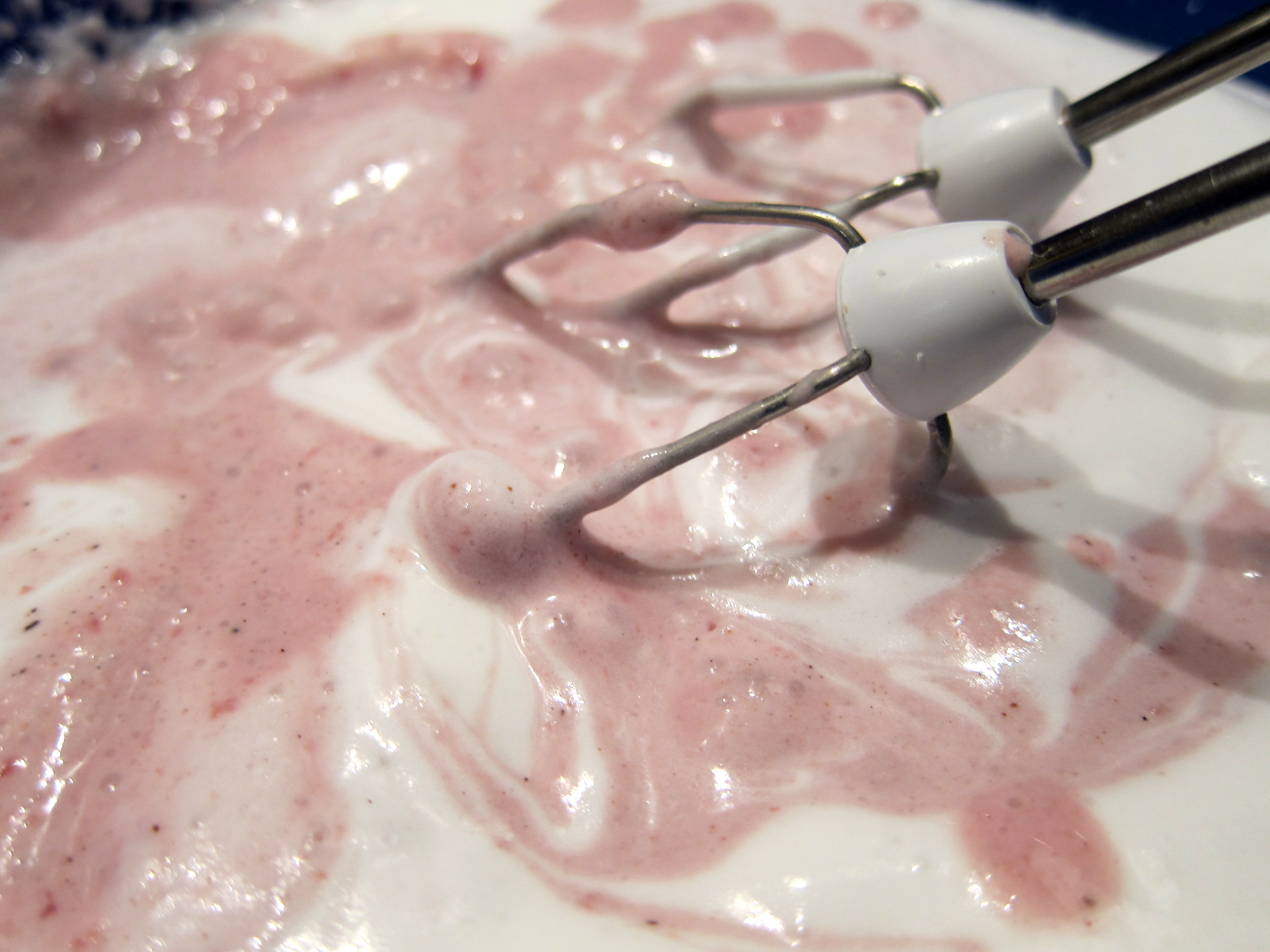
Mixing it all together! The base comes together in four quick steps – first, the egg whites and the sugar are whisked together. Secondly, the whipped cream is added. Thirdly, the Kefir is poured in. And lastly, the puréed cherries and any additional sweetening are added and everything is blended together.
With regard to the sweetening, you could use ordinary white sugar all the way. But I have also had good results with a mix of white sugar, honey and some Stevia (PureVia-type, to be exact). As you may remember, I do not particularly like the after-taste of ‘alternative sweeteners’ (Stevia included). However, used as a complement and in the company of ‘covering’ flavours, this time I found the outcome very satisfactory!
Final results
Similar to yoghurt, frozen Kefir offers a very enjoyable combination of tart and sweet. The taste was exactly what I had in mind – light, vibrantly refreshing and very much cherry! And it also gives you those pleasant vibes of being “healthy” too. But do not let that discourage you – even leaving any health aspects aside, frozen Kefir is very enjoyable (it even became a particular favourite with one on my daughters, who otherwise tend to favour far sweeter creations).
In terms of consistency, the frozen Kefir also turned out very nicely, even after spending some time in the freezer – despite the rather limited amount of cream in the recipe, the whipped egg whites and the whipped cream obviously teamed up and made a positive contribution here! And using some Stevia as a support to, rather than full replacement of, ‘ordinary’ sugar also worked very well.
So, do your stomach a double favour today and enjoy this frozen key to longevity!
- 250 ml (about 1 cup) Kefir
- 100 ml (about 0.4 cup) cream
- 2-3 egg whites (whipped soft with sugar)
- 180 ml (about ¾ cup) sugar (or optionally 140 ml (0.6 cup) sugar, about 2 tablespoons of honey and possibly a sugar-equivalent tablespoon of Stevia (or similar sweetener) in case even more sweetness is required …)
- 1 teaspoon genuine vanilla extract/powder
- about 200 ml (about 0.85 cup) cherries (being totally out of season here, I used a jar of pitted ones in light syrup; the syrup not to be added to the base)
- First, whisk the egg whites with the sugar.
- Add the cream, continue to whisk.
- Then purée the cherries with a hand mixer or similar. Add this purée, plus (optional additional honey/Stevia), and the vanilla.
- Finally, add the Kefir. Whisk well and churn in your ice cream machine according to instructions.
- Enjoy freshly churned, or put in a freezer-safe container, cover with plastic film and a lid and store in the freezer.

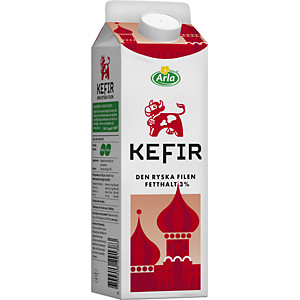
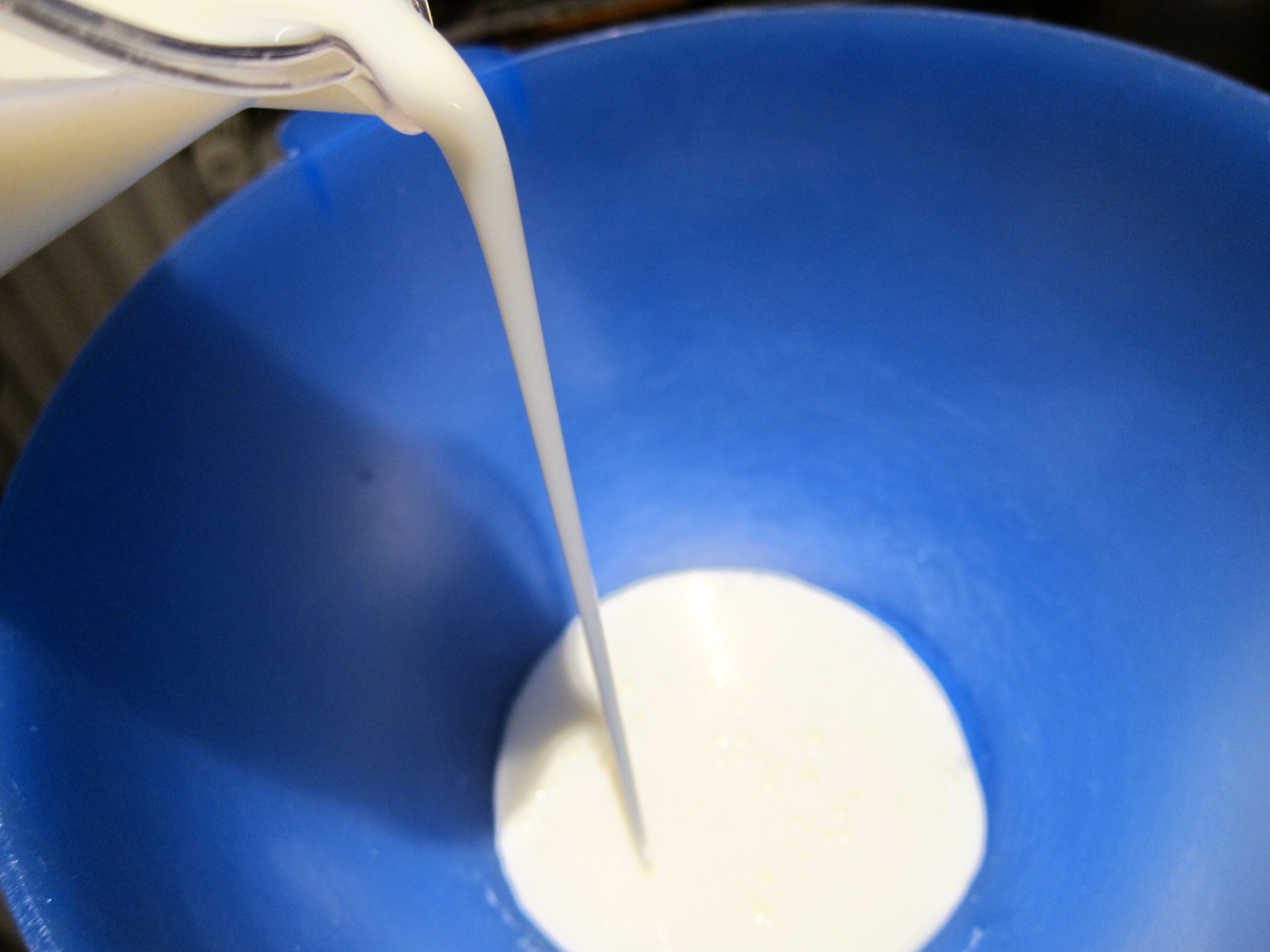
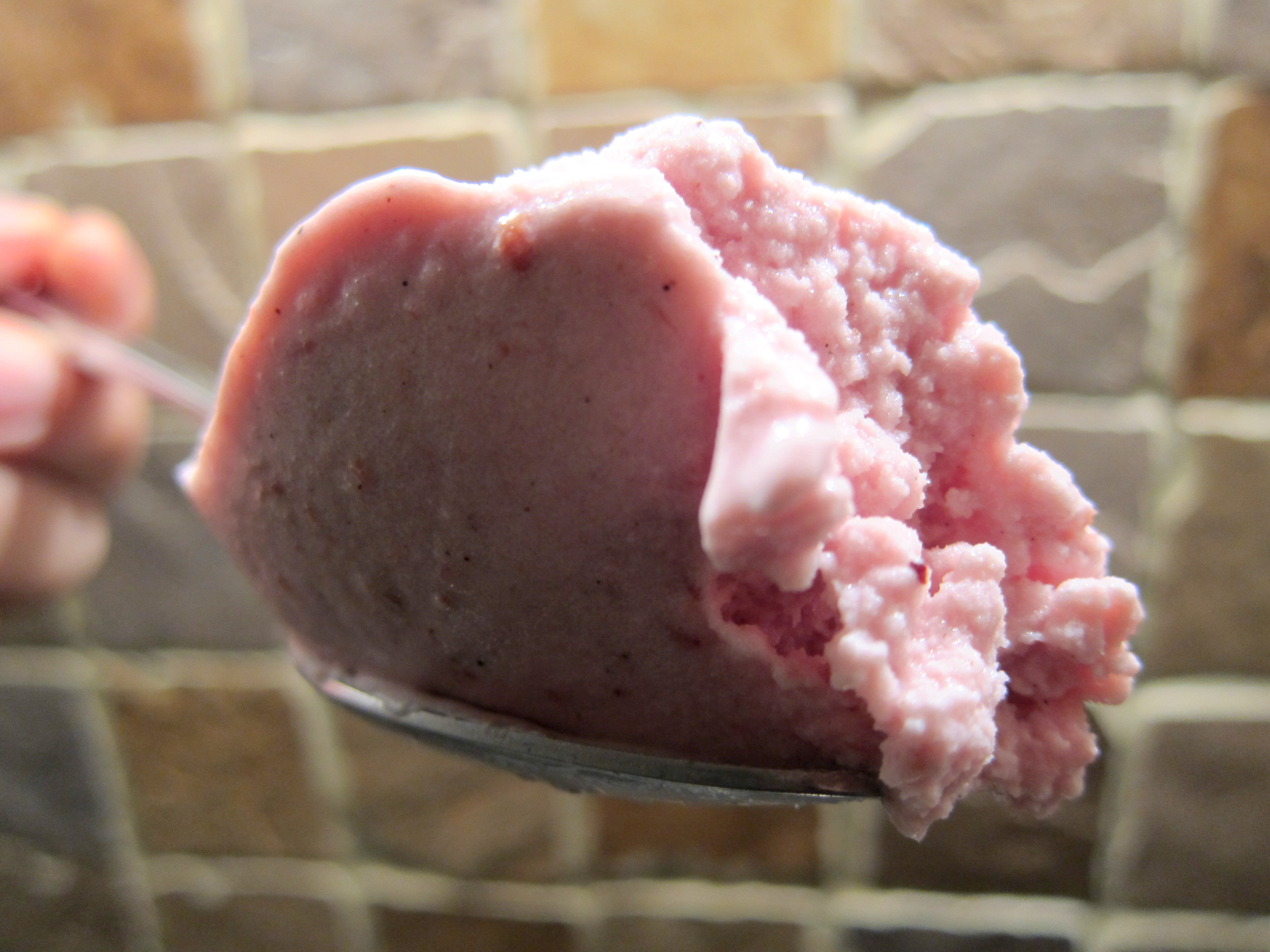
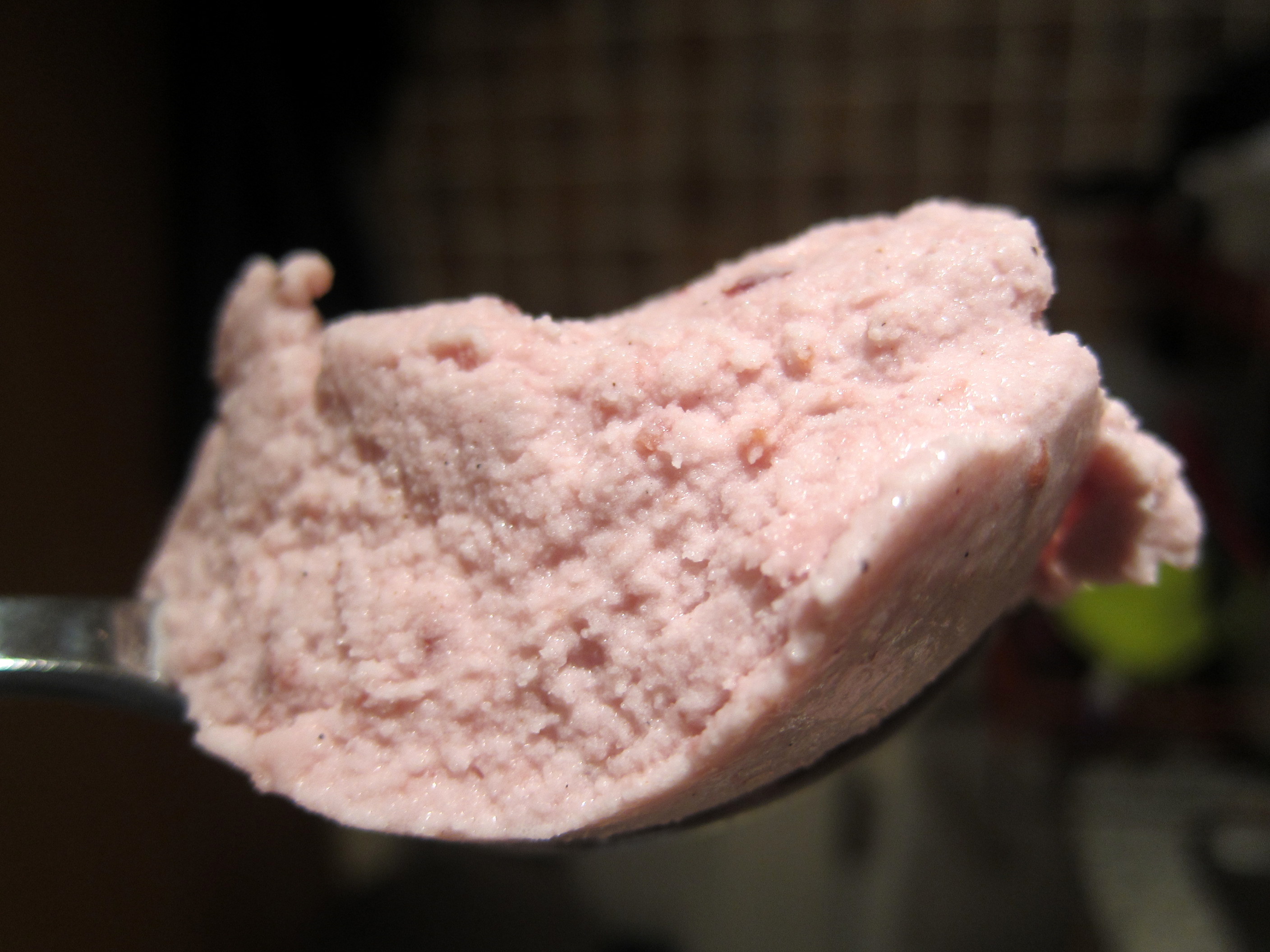
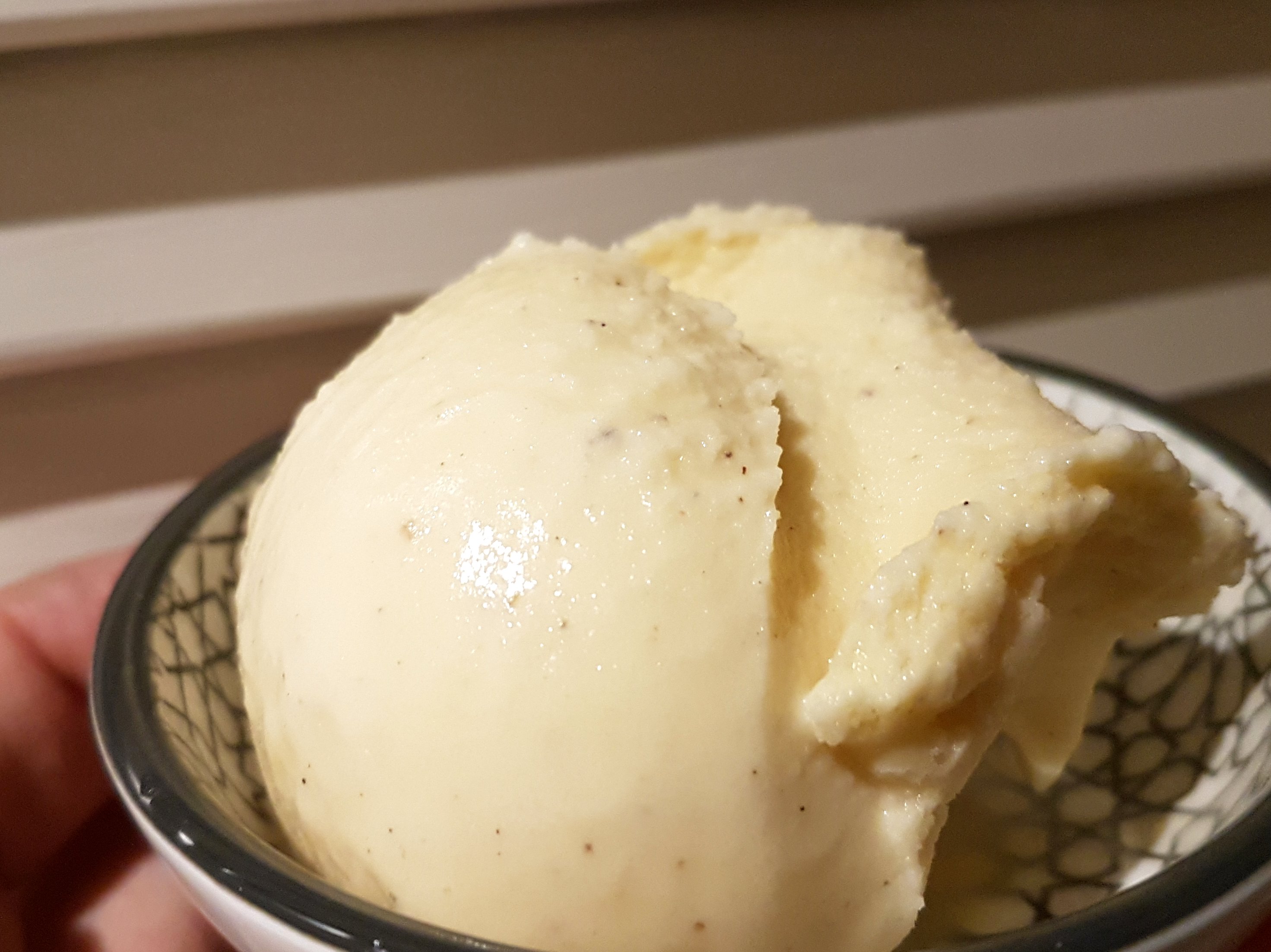
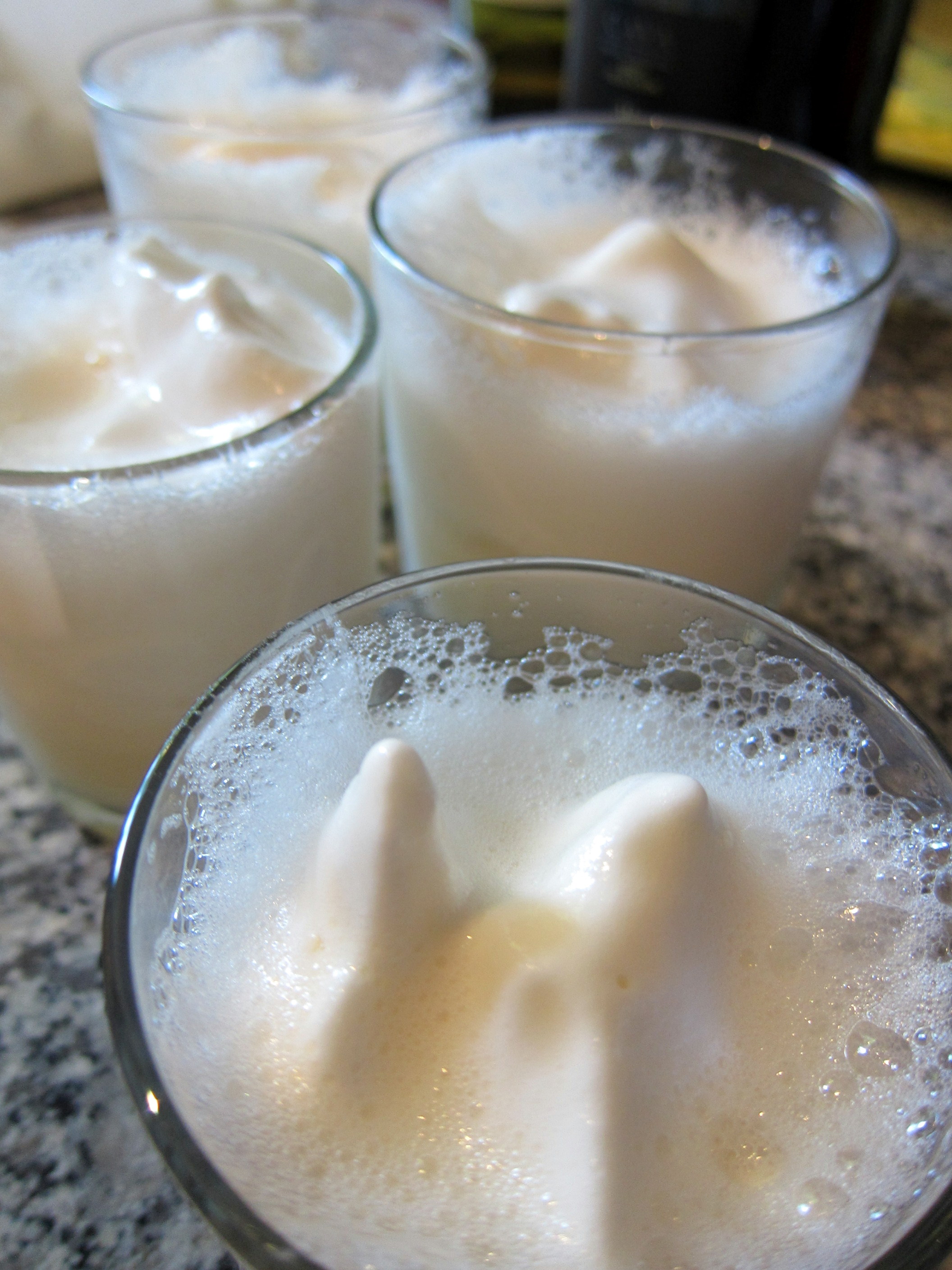
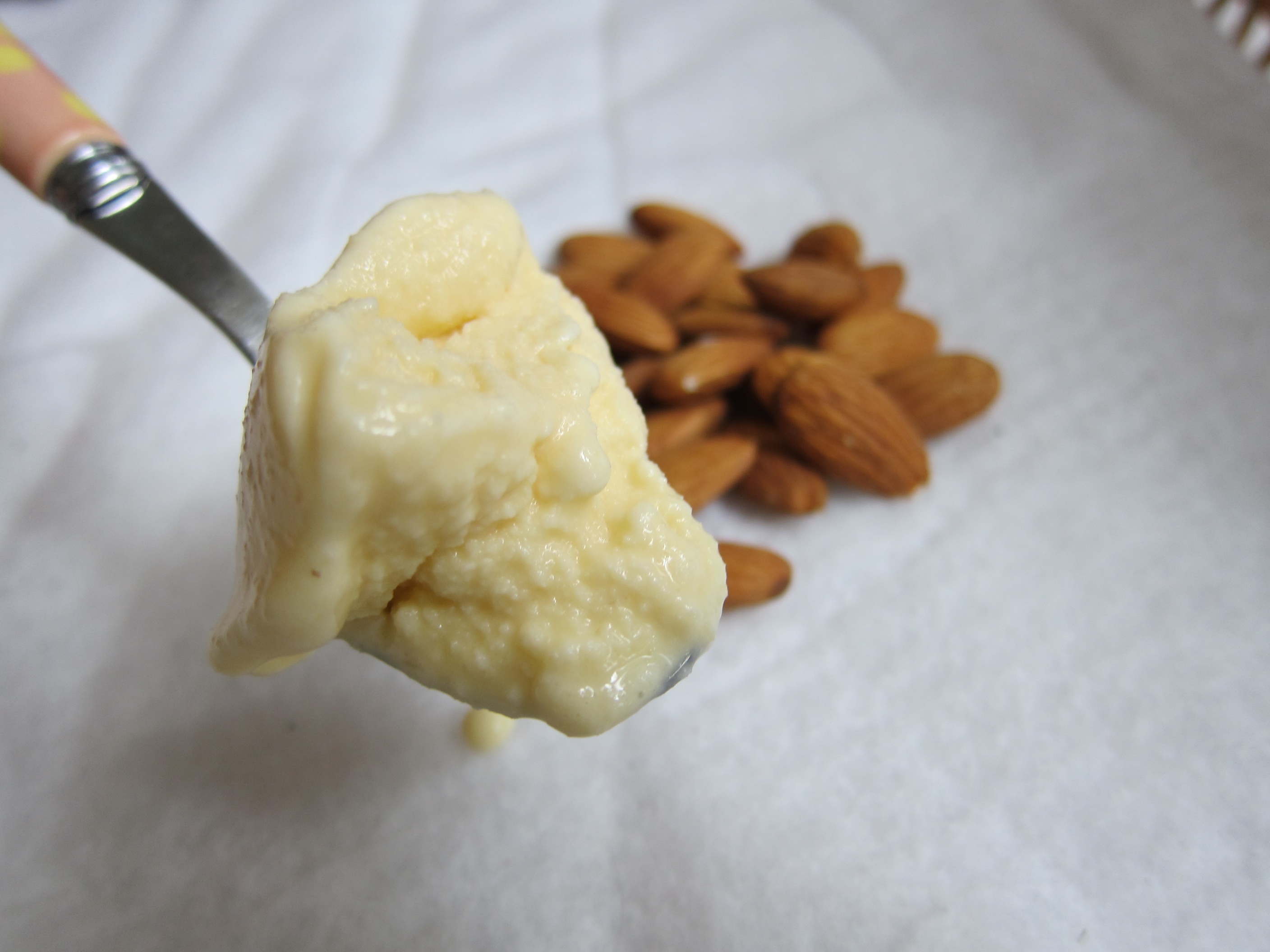


Interesting. I never liked frozen yoghurt- never turned out the way I imagined. This looks better. In one cookbook I found recipe for “best yoghurt ice cream” and it is made with egg whites (but calls for stand mixer, which I do not have, so never tried this one) . Kefír in Czech Republic is in the smallest shop – natural and with flavoring, it is stuff I buy almost daily. Nice ice cream is made with buttermilk…
Dear Katerina,
I’m a sucker for frozen yoghurt myself, but agree that it sometimes might be quite tricky to come up with the right proportions (did you try my favourite raspberry frozen yoghurt-recipe?). But the Kefir-recipe here is also very nice:-)
OH! Perfect! That is just what I want – do you think it would be ok to substitute creme fraiche for the cream part? Fantastic!!!
Joanna,
Certainly – particularly in recipes for frozen yoghurts (and Kefir belongs to that family), you should generally always be able to substitute creme fraiche (sour cream) for any cream-parts, as long as the fat contents are the same. Obviously, you won’t be able to whip sour cream the way you can whip cream which may be of differing importance. As you can see in this post, you might choose other ways of improving the consistency (Italian meringue, whipped egg whites, more (and/or) inverted sugar, more fat …) so there are usually things to try which may make up for even the lack of “whippability” in situations when that seems important 🙂 .
Anders, what about substituting the egg whites with gelatin (as stabilizer)? I don’t have anything against using raw eggs or italian meringue, but just hate the thought of using only part of the egg, since the other part generally ends up neglected for quite a while in the fridge. As for kefir, I make some daily with the real grains, and it would be great to sneak it into ice creams (I’m thinking it would also work in sherbet?)
Alina,
You could certainly try substituting the egg whites with gelatin (or pectin, or some other stabiliser of your choice): the result might differ a little, but that is usually the case since different stabilisers usually put their specific touches to the ice cream: Go ahead and try! And yes, I think you certainly could try to use some of your kefir in sherbets too.
Ps. If you are worried about left-over egg yolks, why not make a nice, classic Italian (or French) ice cream on those?